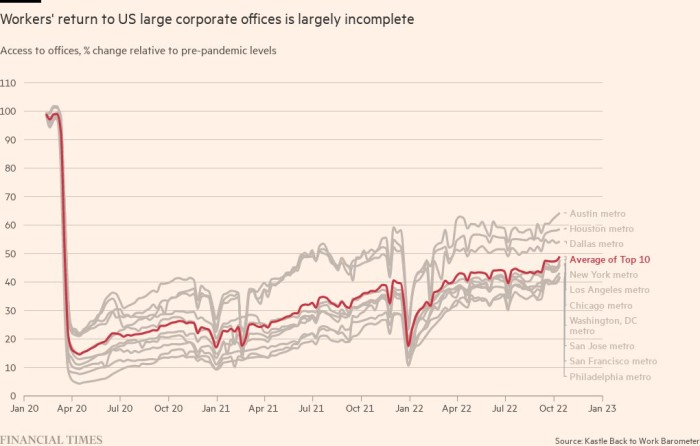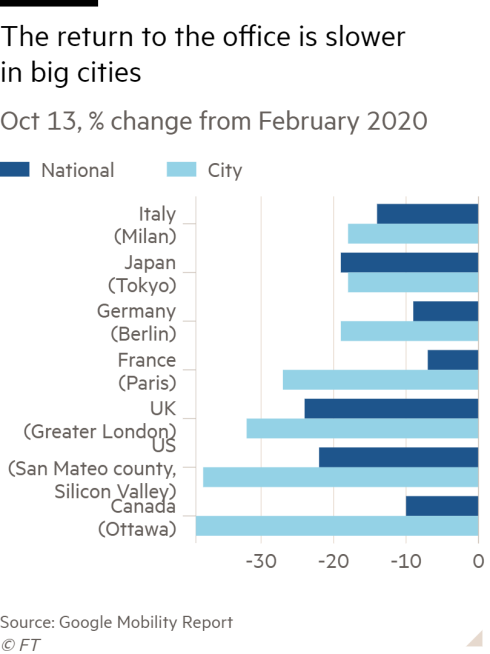Office workers embrace hybrid working as post-pandemic norm
Office workers across the world’s biggest economies have not resumed their pre-pandemic commuting, instead embracing hybrid working as the new normal according to widely-watched commuting data.
By mid-October trips to workplaces in the world’s seven largest economies were still well below their levels before the coronavirus took hold in early 2020, according to a Financial Times analysis of phone-tracking movements published by Google.
In Japan, footfall was 7 per cent below pre-pandemic levels while in the UK it was down 24 per cent. Across major advanced economies office trips are more popular on the middle days of the week, while Monday and Friday tend to show large drops in attendance.

A survey by the Munich-based think-tank Ifo showed that in August one-quarter of employees in Germany still worked from home for at least part of the time.
In the UK, a regular survey run by the Office for National Statistics showed that more than a fifth of UK workers were using a hybrid model of working in early October, largely unchanged since the spring. The proportion rose to more than half of the workforce for information and communication, with professional, scientific and technical activities being only a little lower.

Google began to publish daily data on travel patterns in April 2020 as a tool for governments and policymakers to track the effects of Covid restrictions on the economy. It initially showed a collapse in visits to workplaces as people in many countries were forced to stay home.
The mobility reports were used by the Bank of England and the European Central Bank as a snapshot of the impact the pandemic was having on the economy, as they were published months ahead of official figures.
This story originally appeared on: Financial Times - Author:Valentina Romei
























